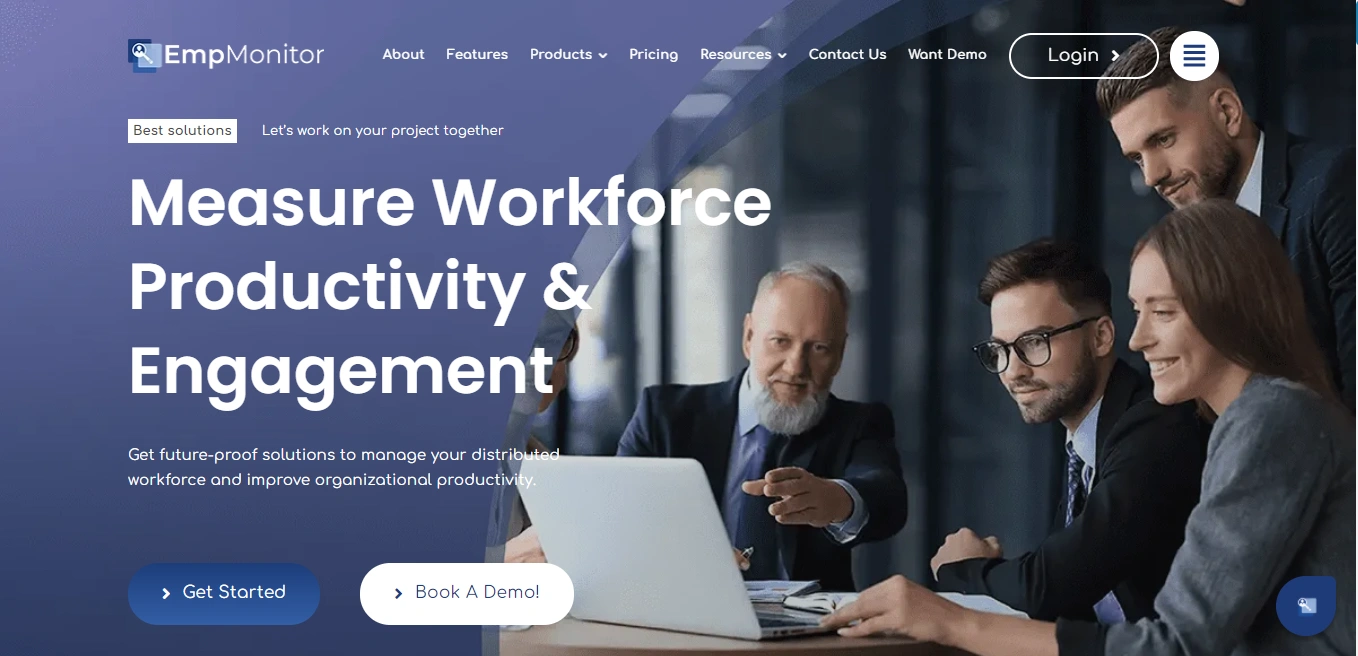Success doesn’t just depend on having a great product or a loyal customer base. It also hinges on how quickly and effectively a company can respond to change. Whether it’s market fluctuations, technology shifts, or evolving customer expectations, the ability to pivot with precision has become critical. Operational Agility is a key trait of companies that thrive and grow stronger amid disruption.
While many organizations focus heavily on long-term strategies, the real differentiator lies in how well those plans adapt in real time. To build a truly resilient and forward-moving business, embracing Operational Agility is no longer optional—it’s a central pillar of sustained relevance.
Let’s break down why it matters, how it works, and how your business can develop it into a strategic advantage.
In a hurry? Listen to the blog instead!
What Is Operational Agility?

This doesn’t mean constantly changing direction or being reactive. Instead, it’s about making informed adjustments with minimal friction. Think of it as dynamic stability—the power to stay grounded while moving with precision. Companies that master this are able to innovate faster, retain customer loyalty, and keep internal teams aligned even when uncertainty looms.
To appreciate its full impact, we need to look at how Executional Agility influences every layer of business structure—from leadership decision-making to day-to-day execution.
The Role Of Leadership In Driving Agility
Leadership is the backbone of Operational Agility. Without executive commitment, even the most flexible systems can fall flat. Leaders set the tone for how change is perceived and executed. More importantly, they must cultivate a culture where adaptation isn’t feared but encouraged.
Agile leaders focus on clarity over certainty. They don’t always have the answers, but they know how to gather insights quickly, weigh options, and move forward with confidence. This kind of leadership promotes a work environment where people feel empowered to share feedback, experiment, and pivot based on real-time results.
When leadership embraces Executional Agility, it becomes much easier to cascade that mindset across departments. It naturally leads us to the next foundational aspect: aligning teams and processes.
Building Cross-Functional Collaboration For Seamless Execution

Cross-functional alignment ensures that no single team is working in isolation. Everyone is pulling in the same direction, even if that direction changes. But this kind of alignment doesn’t happen by accident. It must be baked into the way people communicate, share updates, and make decisions.
Regular cross-team check-ins, integrated planning sessions, and shared performance metrics can make agile execution feel natural rather than chaotic. And when execution flows smoothly, innovation is the next logical result.
Why Agility Fuels Innovation Without Disruption?
Contrary to popular belief, being agile doesn’t mean slowing down to reassess at every step. Instead, it means having the systems and mindset to act on ideas faster. It is why Operational Agility directly supports innovation—it reduces the cost of trial and error.
Agile businesses test new products, processes, or models without waiting for lengthy approvals. They can run micro-experiments, gather real-world data, and make adjustments before scaling. This ability to iterate in real-time opens the door for innovation without introducing chaos.
By enabling quicker feedback loops and risk-controlled experimentation, Executional Agility removes the fear of failure. When people know they can adapt, they’re more likely to try something new. And that’s when breakthrough ideas emerge.
Innovation, however, must be informed by data, and that brings us to the next key point.
Leverage Data To Guide Agile Decisions

Every department must be able to interpret and act on key metrics. Whether it’s customer behavior, market trends, or internal efficiency rates, the right data at the right time empowers teams to shift gears confidently. Tools that provide real-time dashboards, predictive analytics, and automated alerts are essential in creating a truly agile system.
Yet technology alone doesn’t guarantee agility. What matters is how people interact with that technology and with each other.
How To Use Technology As A Catalyst?
There’s no doubt that digital tools play a major role in enabling Operational Agility. Cloud platforms, automation software, and AI-driven insights make it easier to coordinate across teams, track outcomes, and streamline decision-making.
But agility isn’t just about having the latest tools. It’s about using them effectively. Too often, companies invest in complex systems without aligning their people and processes. The result? Confusion, delays, and poor adoption.
To truly support Executional Agility, technology should be selected and implemented with the end user in mind. It should enhance how work gets done, not complicate it. The right digital infrastructure should encourage:
- Quick iteration and real-time adjustments
- Seamless integration between tools and departments
- Transparent communication across business functions
- Accessible insights to guide immediate decisions
Tools that offer visibility and accountability, without compromising flexibility, are particularly valuable. Workforce analytics platforms such as EmpMonitor, for instance, offer clarity in how teams operate. With features that support productivity tracking and employee insights, it becomes easier to measure outcomes and adjust courses rapidly, which is the essence of agility.
Once the right tools and data systems are in place, the next step is building a resilient culture that can sustain agility under pressure.
How EmpMonitor Enables Agile Workforces?

EmpMonitor supports this need through a suite of features designed to offer both transparency and ease. As an employee monitoring software, it helps managers gain insights into performance trends without disrupting ongoing work. It’s not about surveillance—it’s about enabling informed, timely decisions that align with agile principles.
With EmpMonitor, teams benefit from:
- Real-Time Productivity Tracking: Leaders can observe how hours are distributed across tasks and identify areas for improvement.
- Behavioral Data Analysis: Spot patterns in work habits and adjust workflows for better alignment with organizational goals.
- Custom Reports and Alerts: Surface key metrics automatically to avoid manual tracking or data overload.
- Enhanced Data Security: Safeguard sensitive files and prevent policy breaches through proactive monitoring.
- Seamless Integration with Teams: Whether hybrid, remote, or in-office, EmpMonitor fits into existing ecosystems with minimal friction.
Serving as a workforce monitoring software, EmpMonitor allows organizations to better understand how their teams operate in real time. It makes it easier to shift resources, eliminate inefficiencies, and keep everyone aligned with short- and long-term goals.
Beyond visibility, EmpMonitor contributes to sustainable growth by acting as a productivity monitoring software that fosters accountability and supports continuous improvement. Employees can track their work trends, while managers gain a comprehensive view to guide coaching and feedback.
Cultivating A Culture Of Resilience And Trust
A company’s culture will either support or sabotage agility. For Operational Agility to thrive, people need to trust that change won’t punish them—it will empower them. It means creating an environment where flexibility is rewarded, not penalized.
Psychological safety plays a huge role here. Teams that feel safe speaking up, proposing changes, or challenging outdated norms are more likely to spot issues early and adapt quickly. Resilience isn’t just about bouncing back from setbacks—it’s about being proactive in preventing them.
A resilient culture isn’t built overnight, but it can be reinforced through continuous learning, open feedback loops, and clear communication. As the culture matures, so does the company’s capacity to maintain Operational Agility even in high-stakes situations.
With a strong culture, the question becomes: how do you measure whether your agility efforts are working?
What Are The Metrics That Matter?

Some common metrics include:
- Cycle time: How long does it take to complete a project or implement a decision?
- Adaptation rate: How quickly can a team respond to change without compromising quality?
- Employee sentiment: Are teams confident in their ability to navigate shifting priorities?
- Customer responsiveness: How quickly does customer feedback lead to changes in product or service delivery?
Regular reviews of these metrics can highlight gaps, celebrate wins, and fine-tune your strategy moving forward.
Scaling Agility Across The Enterprise
Once initial progress is made, the next challenge is scaling Operational Agility organization-wide. It requires more than repeating what’s worked in one department. It involves creating shared frameworks, a common language, and an enterprise-wide commitment to adaptable practices.
Executive alignment is crucial. Leaders must continue modeling the behavior they want to see. At the same time, middle management plays a key role in translating strategy into day-to-day execution. And front-line employees must be equipped with the tools and autonomy to act fast without waiting for top-down decisions.
Scaling agility means rethinking everything from onboarding to project management to goal-setting. It’s a long-term investment, but the payoff is a company that moves as one—even when the destination changes.
Having explored how to scale agility, let’s now consider the broader business impact of embedding it at the core.
Operational Agility As A Revenue Driver

It leads to faster time-to-market, improved customer satisfaction, and higher employee engagement—all of which directly impact revenue. Many high-performing companies attribute their growth to their ability to pivot and iterate in real-time.
But even as agility drives growth, it also introduces complexity. Managing that complexity is the next area we need to explore.
Manage Complexity Without Losing Flexibility
Agile organizations must find the balance between structured systems and flexible execution. As teams grow and projects multiply, it’s easy for processes to become bloated or disconnected. Ironically, this can reduce agility over time.
To maintain Operational Agility, businesses must simplify wherever possible. It could mean reducing unnecessary approvals, minimizing redundant tools, or decentralizing certain decisions. The goal is to keep teams nimble without sacrificing alignment or accountability.
Clarity, not control, becomes the primary driver of consistency. And with that clarity, companies can remain agile even as they scale and diversify.
Read More
Flexibility In Management: 10 Keys To Success
Propel Employee And Organizational Growth In 2024 With Efficiency Metrics
Preparing for the Unknown: Agility As Risk Management
Finally, Operational Agility serves as a powerful tool for managing risk. When disruptions occur—economic shifts, supply chain delays, or competitive threats—agile businesses are better prepared to respond swiftly.
Risk management no longer relies solely on prediction. It relies on preparation. Agile companies simulate potential scenarios, train teams for adaptive responses, and continuously update contingency plans based on new data.
Rather than being caught off guard, they treat uncertainty as a manageable variable. It reduces downtime, preserves customer trust, and protects long-term value.
Conclusion
Operational Agility is no longer a competitive edge—it’s a business imperative. In a world marked by constant disruption and rapid evolution, the ability to pivot swiftly while staying grounded in core goals determines whether a company survives or thrives. From leadership and culture to tools and data, every aspect of your organization must work in harmony to support agile responses.
With solutions like EmpMonitor, businesses gain the visibility and insights needed to support faster decision-making, boost accountability, and drive continuous improvement. Empowering your teams with the right tools today sets the foundation for sustainable growth tomorrow.
FAQs
- How does Executional Agility differ across industries like retail, healthcare, and financial services?
Each industry faces unique challenges and regulatory landscapes. For instance, Financial Services Operational Agility often focuses on real-time compliance, risk management, and digital transformation to keep pace with fast-evolving regulations and customer expectations. In contrast, healthcare emphasizes patient care continuity, while retail prioritizes supply chain responsiveness.
- What are the core elements of a strong Operational Agility Framework?
A solid Operational Agility Framework typically includes real-time data access, cross-functional collaboration, adaptive leadership, flexible technology infrastructure, and a continuous feedback loop to refine decisions and processes rapidly.
- Can small businesses also benefit from operational agility strategies?
Absolutely. In fact, small businesses often have the advantage of being more nimble. By adopting agile workflows, streamlining communication, and leveraging automation, they can respond to changes faster and seize market opportunities with fewer constraints than large enterprises.
- What is the difference between operational agility vs. strategic agility?
Operational Agility vs. Strategic Agility comes down to focus and timescale. Operational agility is about reacting swiftly to day-to-day shifts and disruptions, while strategic agility focuses on long-term adaptability—pivoting business models, entering new markets, or redefining core services in response to macro trends.
- How can companies measure the ROI of implementing Executional Agility practices?
Key metrics include reduced time-to-market, increased customer satisfaction, lower operational costs, and improved employee productivity. By tracking these indicators, companies can see how agility efforts contribute to business performance and resilience.










